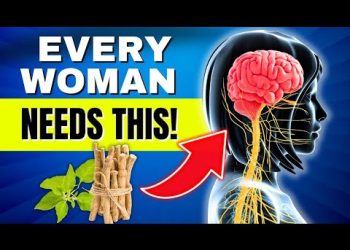The Simplest Strategy for Fat Loss
The journey to fat loss can be daunting, but sometimes simplicity is key. In the vast world of diet plans and nutritional advice, finding a straightforward, sustainable method is crucial. This article dives into an easy-to-follow diet plan that promises both short-term and long-term benefits, suitable for both beginners and seasoned health enthusiasts. Here we explore a balanced diet, strategic high and low-calorie weeks, and essential food groups that form the foundation of effortless fat loss.
Thomas Delauer’s Food Pyramid
The blueprint of this diet begins with a unique food pyramid. Lean meats, such as lean ground beef and chicken, form the base. These proteins are crucial as they are primary energy sources that are satiating without being calorie-dense. Moving up the pyramid, there’s a category for slightly fattier cuts of meat and eggs, which provide essential fats and nutrients without drastically increasing caloric intake.
Diverse Dairy and Fruit Choices
Dairy plays an important role, especially protein-rich options like Greek yogurt and cottage cheese. The presence of aged cheeses brings in beneficial saturated fats. Thomas emphasizes the importance of fruit, particularly berries, and honey, as they offer carbohydrates needed for energy, with a natural and healthier twist compared to processed sugars. Honey and even a touch of maple syrup are welcome additions for those active days when energy levels need a boost.
Veggies and Starches
Vegetables and starches sit higher up on the pyramid, with an emphasis on whole foods like sweet potatoes and starchy vegetables. They provide important vitamins, antioxidants, and just enough fiber without overloading the body. The strategic use of veggies for their micronutrient content rather than just their fiber content distinguishes this approach from conventional advice.
Healthy Fats and Occasional Treats
Healthy fats are to be consumed strategically, with fats from dairy, lean meats, and additional sources like olive oil and macadamia nuts. At the peak of the pyramid, occasional treats like chocolate or a bit of ice cream are recommended to maintain mental satisfaction and prevent binge eating.
Balancing Macronutrients
The diet also highlights the importance of maintaining a protein-centric approach. 40-50% of daily caloric intake should come from protein, allowing the other macronutrients to naturally fall into place. Adjusting the protein intake based on activity levels ensures that both muscle building and fat loss goals can be achieved without overwhelming the body.
High and Low Calorie Cycles
A key takeaway is alternating between high calorie and low calorie weeks. This approach mirrors training strategies like descending ladders to maintain workout intensity. During high-calorie weeks, there’s a focus on increased movement to burn off the extra intake, while low-calorie weeks allow the body to rest and recover, maintaining a balanced metabolic environment.
The Role of Protein Shakes and Electrolytes
Protein shakes and electrolytes are highlighted as easy tools to curb hunger and maintain nutritional balance, especially on busy days. An unflavored or preferred option can provide a quick protein boost, while electrolytes can help curb appetite and support hydration.
Intermittent and Burst Fasting
For those interested, incorporating ‘burst fasting’—three to five days of intermittent fasting followed by days of regular eating—can offer a metabolic shock to accelerate fat loss. This approach allows for adaptation to fasting without the need for long-term commitment, offering flexibility in the dieting process.
Finding Balance
Maintaining a balance between your sympathetic (stress) and parasympathetic (recovery) nervous systems is crucial. High-intensity training requires sufficient caloric intake to prevent overuse injuries. Ensuring a balance between stress and recovery helps avoid long-term negative impacts on the body.
Top 10 Essential Foods
To wrap up the simplified fat loss plan, Thomas Delauer suggests staples like eggs, lean ground beef, honey, chia seeds, flax seeds, fermented dairy and veggies, berries, macadamia nuts, Greek yogurt, cottage cheese, sweet potatoes, and whey protein concentrate. These foods offer a well-rounded nutritional profile to support weight loss while maintaining overall health and vitality.











